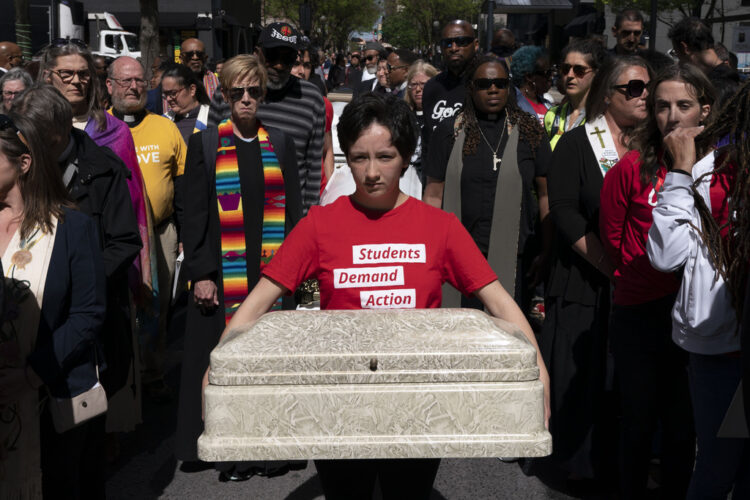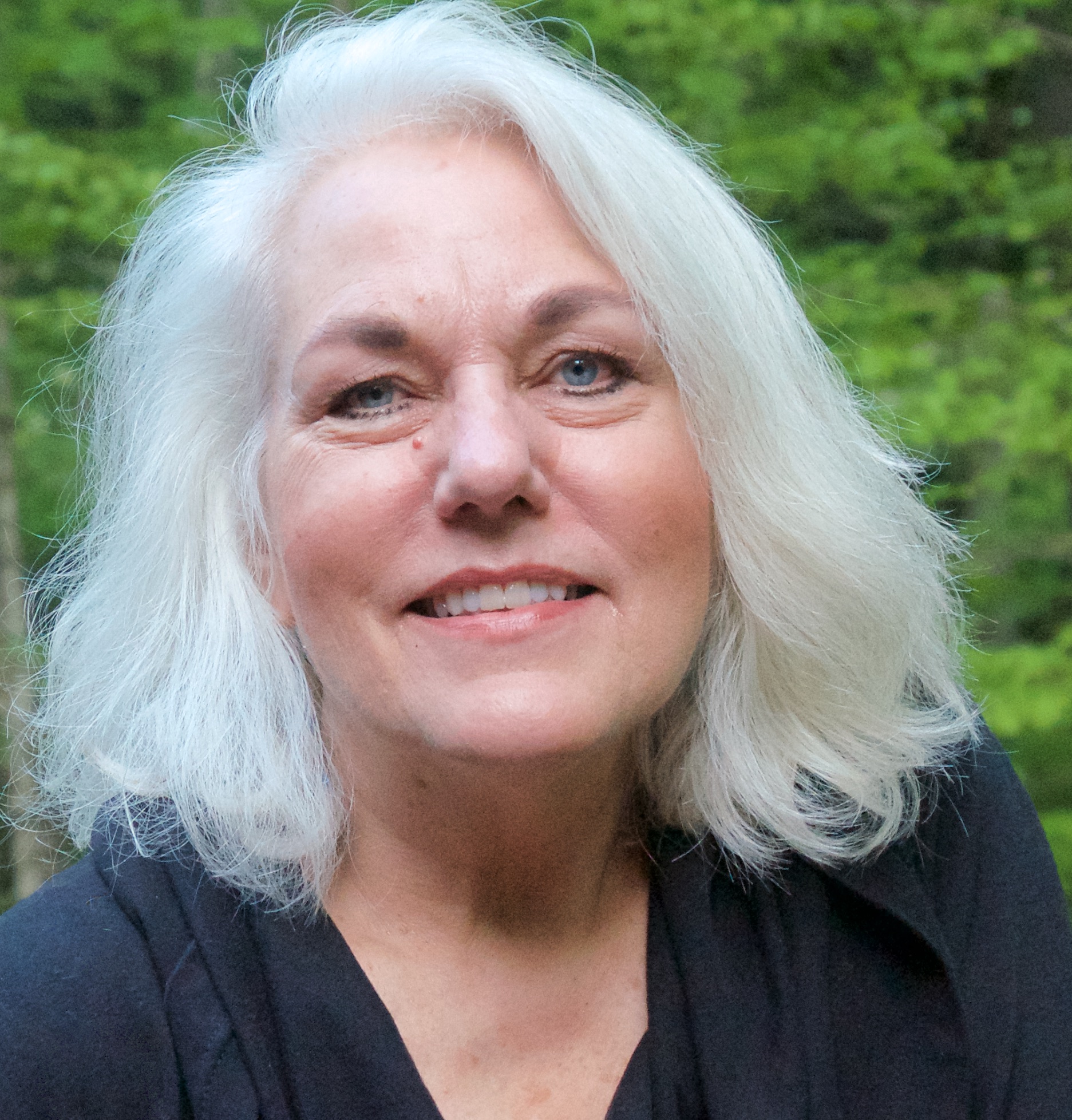
A student holds a child's casket before a march in Nashville to protest gun violence on April 17, 2023.
By Jacqui Banaszynski
One of the tragic realities and outrages of life in America has become the steady drumbeat of gun deaths. The news takes on a Gatling-gun pace — and that reference is intentional. We are all being assaulted by a lethal combination of political indifference and futility as the body count rises and rises. In many cases, it goes beyond indifference to defiance: America must have its guns!A corollary to that rat-a-tat of news is the challenge it presents to the press to cover it. Or the challenges, plural. Storyboard has featured many posts over the years about how reporters handled both the sensitivity and brutality of a mass gun-violence event, as has our big-sister publication, Nieman Reports. It is a sad irony that reporters are getting so good at it. Even more sad, though understandable, is that so much of the public has tuned out. Helplessness is an effective numbing agent.
The New York Times Magazine (April 20, 2022) waded into that societal stasis with a bold story — one some will be reluctant to read and that again sparks the debate over graphic descriptions and images of slaughtered children. “They Saw the Horrific Aftermath of a Mass Shooting. Should We?” is a stunning reveal of the experiences of three officers from the Connecticut State Police who had the unimaginable job of investigating the unimaginable: the shooting deaths of 20 children and six staff members at Sandy Hook Elementary School in 2012. The shooter also killed his mother and himself. But it is the slaughter of those children that sits at the center of the investigators’ stories.
I scanned the story in the middle of a some work-related travel. I will read the story again, more slowly, online when I reach my destination. But for some reason, I want the paper in my hands, perhaps to slow my read or just to pause and breathe and try to touch it. That is a weird and unexplainable thought, but some stories I just need to hold. Some I need to read, then set aside, then read again through a lens that lets me see through layers of both emotion and craft. I am not immune to the desire to look away, but it is imperative, at some level, for society to know the consequences of actions — and inaction.
So for now, I will turn this over to a brief email I received from Jill U. Adams about the story. Adams is a freelance journalist from upstate New York and an occasional contributor to Storyboard. She writes about health, medical research and the environment. She hikes like a badass with her husband. Perhaps most apt for this note, she is a mom and has always seemed to me made of practical stuff. Here’s what she wrote, shared with her permission:
1. Of all the news and analysis of school shootings, which generally just make me feel helpless, this one manages a fresh tack. It looks at the impact of a horrific school shooting on the people who were charged with the crime scene investigation. (One of whom had recently wanted to quit her job because she was so burned out and had become pathologically vigilant in her everyday life.)
2. One particular detail, which prompted a crying jag in this reader because it’s so goddamn relatable: Going thru the things students left behind, a crime scene investigator warns his team to avoid reading any notes found in lunchboxes. That everyday ordinariness is killer, not to mention that they’re expressions of love from parents.
Why am I sharing with you? Because once I found myself analyzing the power of this piece of journalism — the “how’d they do that?”
The writer of “They Saw the Horrific Aftermath” is Jay Kirk, a nonfiction book author on the faculty at the University of Pennsylvania. This was his first piece for the NYT Magazine. I don’t know Kirk, or the answer to Adams’ question: How he and the editors did this. In coming weeks, we’ll try to find out. It offers portals into issues of sourcing, access, scenes and the delicate issue of describing what most people can’t look at — but what some must.
For now, I hope you find it in your heart to read it.
* * *
A version of this post was first published as a Storyboard newsletter April 21, 2023.


